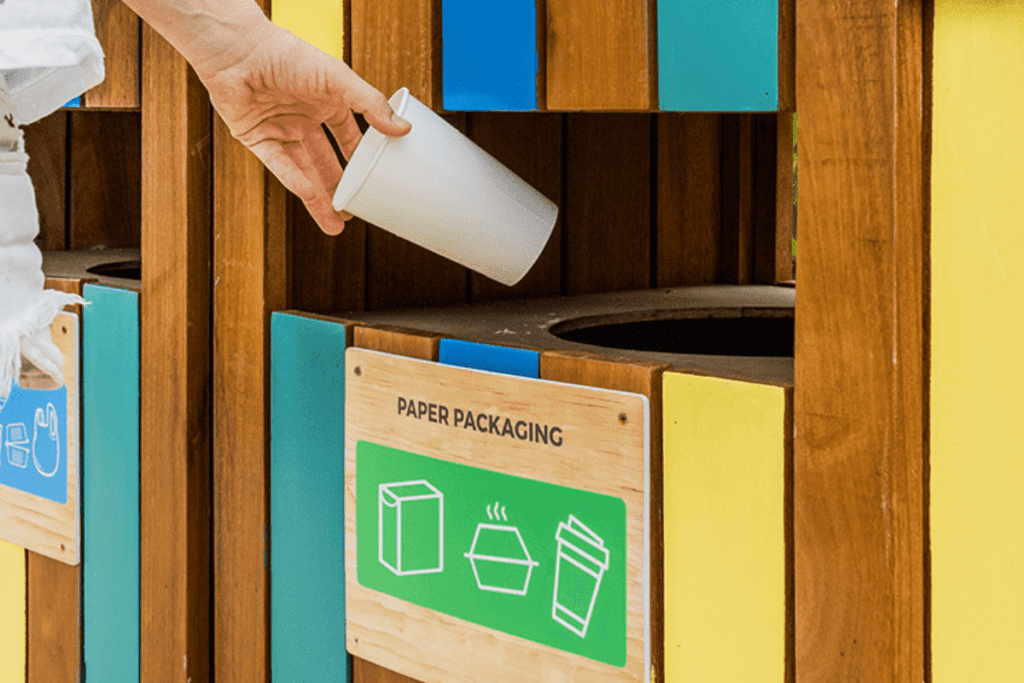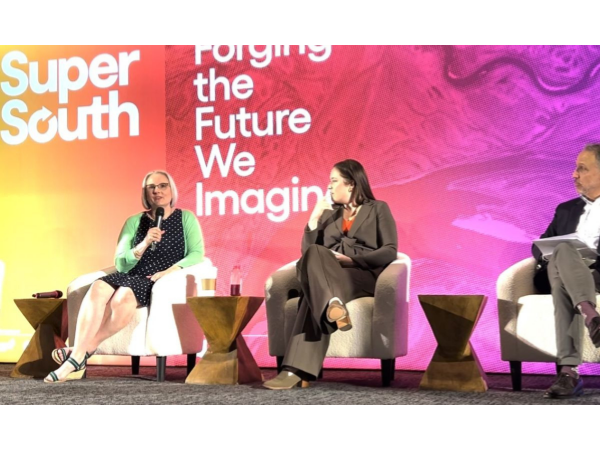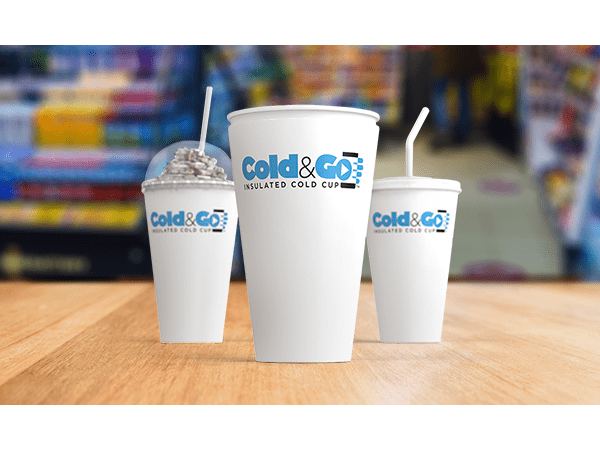News
A Major Milestone for Paper Cup Recycling
July 28, 2025

The Recycled Materials Association (ReMA) for the first time added paper cups to its list of classifications for recycled materials. ReMA’s Institute of Scrap Recycling Industries (ISRI) Specifications now include paper cups under paper items allowable in inbound residential single and dual recycling streams.1
This is a major milestone in a broader movement to increase awareness and drive greater collection of paper cups in recycling systems. Industry associations, consumer brands and sustainable packaging companies — including Graphic Packaging International, the largest producer of paper cups in the U.S. — have been collaborating to accelerate this important change. In the U.S., we collaborate with the Paper Cup Alliance, Foodservice Packaging Institute (FPI), American Forest & Paper Association (AF&PA), NextGen Consortium and other industry groups.
“The inclusion of paper cups in ReMA’s specifications is the result of years of education and collaboration across the recycling value chain,” said Ed Tucciarone, Graphic Packaging’s procurement director, who works closely with ReMA. “We’re proud to support these efforts. This is a win not only for our industry, but also for the environment and for companies pursuing sustainable packaging goals.”
ReMA represents the global recycled materials industry. Its ISRI Specifications set standards on the quality and use of recycled materials. This guidance is highly influential with waste collectors and materials recovery facilities (MRFs) — who decide what is collected in municipal recycling systems — as well as the development of end markets for recycled materials.
What Makes Something Recyclable?
In the U.S., recycling can be confusing. Guidelines vary across communities and continually evolve in response to changing national and state requirements and new innovations in material sciences and technologies.
Generally, what makes something recyclable is whether:
- the item is designed to be recycled,
- the item is accepted and collected for community recycling,
- the material is easily sorted and recovered at scale and
- an end market exists to turn the material into something new.
Recycling is a collaborative system that includes multiple steps and stakeholders: accessible locations for consumers to drop off recyclables, community collection by waste haulers, sorting and processing at local MRFs, and end market demand by manufacturing facilities. All components must work together.
So Now, Are Paper Cups Recyclable?
Let’s compare the current state of paper cups to the list above of U.S. recycling criteria.
1. Are Paper Cups Designed to Be Recycled?
Yes. Paper cups are designed to be recycled (and have been for years). Paper cups are primarily made from renewable resources: trees. (Wood-based fibers typically make up approximately 95% of the cup.) After disposal, this material can be easily reused and transformed into new products.
What makes paper cups able to hold liquids without leaking are coatings. These thin coatings found on the inside of the cup (and sometimes also on the outside) are a minor portion of the cups’ construction and today are mainly plastic-based (although newer, more sustainable materials are in various stages of development).
In the past, it could be difficult to separate the coating from the paper fiber components of the cup. Modern paper cups are designed so that the coating can be easily separated. And today’s advanced technologies are more effective at separating the thin plastic lining from the wood fiber to separate, filter and process the fiber into something new.
2. Are Paper Cups Accepted in U.S. Recycling Streams?
Yes, many consumers and businesses have access to a recycling collection point for paper cups, like curbside recycling or a community recycling center. Major cities coast-to-coast already accept paper cups in their recycling programs, lists AF&PA: Atlanta, Ga.; Chattanooga, Tenn.; Denver, Colo.; Detroit, Mich.; Louisville, Ky.; Madison; Wis.; New York City; San Francisco, Calif.; Seattle, Wash.; and Washington, D.C.
In 2022, about 11% of communities accepted cups in their recycling programs. In 2024, about 13% of communities accepted paper hot cups, according to The Recycling Partnership. And the list continues to grow with the most recent announcements from Spartanburg County, S.C.; Omaha, Neb.; Austin, Texas; and the Hampton Roads region of Virginia.
3. Are Paper Cups Effectively Recovered in the U.S.?
Yes, many MRFs across the U.S. effectively recover paper cups at scale, including in the communities listed above.
After a recycling hauler delivers the collected paper cups, a MRF separates and sorts paper cups into the correct recyclable material stream (e.g., mixed paper, carton). The MRF then compacts and bundles the materials into bales to sell to a recycling manufacturer.
Organizations like the NextGen Consortium and FPI continue to collaborate with MRFs to strengthen the infrastructure for sorting and processing paper cups. “MRFs have improved processes to remove more plastic from the paper stream,” stated paper recycling consultants Moore & Associates in a 2022 white paper. “MRFs have begun to invest in optical sorting and robotics in order to improve their ability to sort paper cups, foodservice packaging and other smaller volume types of paper packaging.”
4. Does an End Market Exist for Paper Cups Recycling?
Yes, there’s market demand for paper cup fibers. The NextGen Consortium celebrated a milestone of over 40 U.S. manufacturing facilities accepting paper cups in 2024.
The final requirement for paper cups recycling is a buyer for the bales containing paper cups. Manufacturing facilities that buy the bales process the recovered cups into new products, like paperboard for packaging or for corrugated shipping boxes.
Graphic Packaging’s new state-of-the-art recycled paperboard manufacturing facility in Waco, Texas provides an additional end market for recovered fiber materials (including polyethylene-coated materials like paper cups). At full production, our cutting-edge facility will have the ability to process recovered fiber equivalent to 15 million paper cups per day. This fiber will be turned into recycled paperboard and then converted into new consumer packaging for everyday essentials.
Moving Paper Cup Recycling Forward
Despite lingering misinformation, most people in the U.S. do believe that single-use paper cups can be recycled, according to a survey by NextGen Consortium.2 But acceptance by community recycling programs is still a significant obstacle.
“People know recycling is good for the environment, and they want to do the right thing — we see that in how they recycle other materials,” said Michelle Fitzpatrick, vice president and chief sustainability officer at Graphic Packaging. “Recycling has become part of everyday life, but we still need more communities to make it easier for people to recycle paper cups. Placing a paper cup in a recycling bin is a small action, but collectively it makes such a big difference.”
“In the 12 countries we most recently surveyed, 96% of people said recycling helps the environment, 89% said recycling is the bare minimum we can do for the environment and 83% said recycling makes them feel better about the amount of stuff they purchase or consume.”
— Suzanne Shelton, Founder and CEO, Shelton Group
ISRI Specifications play a key role in end market development, which shapes decisions around MRF recovery strategies and community acceptance. “As more manufacturers effectively recover fiber from paper cups, cup recycling is incentivized further upstream in MRFs and communities looking to improve their waste diversion efforts,” stated the NextGen Consortium.
Through year-end 2024, efforts with the Paper Cup Alliance brought the number of end markets for paper cups from four to 41 and launched 25 community partnerships. This directly increased U.S. community access to paper cup recycling by over 7 million households, or an additional 5% from 2017 to 2024.
Consumers can help boost paper cup recycling in their communities, too. Simply inquiring about paper cup recycling with their local waste hauler or restaurant can move the ball (or the cup, in this case) forward.
Once 60% or more of households have access to easily recycle paper cups, brands may be able to make an unqualified claim that their paper cup is widely recyclable, in accordance with the Federal Trade Commission’s Green Guides. That means paper cups may be able to feature the recognizable “chasing arrows” recyclable label. Most people (78%) look at packaging labels to know whether a product is recyclable.
Why Use Paper Cups at All?
There’s no one-size-fits-all solution for hot and cold drinks on the go, and many consumers favor the convenience of disposable, single-use cups. Several trends influence the growing use of paper cups:
- Bans on plastic cups: Many regions are passing packaging regulations to ban polystyrene (foam) cups and containers, in favor of more circular packaging alternatives like paper cups and paperboard containers.
- Consumer preferences for sustainable packaging: Globally, 45% of consumers actively avoid single-use plastic items. And more than half of consumers feel that paperboard packaging (like paper cups) helps to make things better for the environment.
- Popularity of takeout, drive-thru and delivery: National Restaurant Association research found that younger generations consider “off-premises” dining essential to their daily lives. And single-use cups are an essential part of any quick-service restaurant’s (QSR) packaging portfolio.
- The “paperization” of everything: Innovations in barriers, coatings, closures and finishes continue to evolve fiber-based packaging, and more companies are making the switch to meet consumer demand for sustainable packaging. The Sustainable Packaging Coalition named this the No. 1 trend for 2024, and in 2025 the Coalition reaffirmed that, “paper is increasingly able to do almost as much from a performance standpoint as other materials.”
“There are still moments when reusable cups are forgotten at home or paper cups are used for spontaneous coffee runs. In these moments, we must ensure the value embodied in paper cups — specifically the high-quality fiber — is recovered, rather than wasted in the landfill.”
— Kate Daly, Managing Partner & Chief Communications Officer, Center for the Circular Economy
The boom in paperboard-based packaging stands in contrast to the rest of the digital, paperless economy, though. Over time, less and less materials pass through paper and board recycling streams. While paper recovery rates are increasing due to increased access and recycling efficiencies, total recovered volumes of paper remain flat.
This leaves a gap between the supply and demand for recovered fiber. To meet the growing demand for recycled fiber, it’s essential to expand the range of paperboard packaging materials that are recovered and recycled.
Instead of letting billions of paper cups — a high-quality, underutilized fiber source — go to waste, what if we could put them back into circulation? If more of these materials can be recovered, manufacturers and consumer brands can fuel growing sustainable packaging needs by reusing more materials at scale.
That’s the power of a paper cup.
1Single stream recycling allows paper, plastic, metal and glass to be mixed for collection. Dual stream recycling requires paper items be separated from plastic, metal and glass at the collection point.
2A national survey commissioned by the NextGen Consortium (“What Happens Next? Exploring what consumers do with their single-use cups after purchase,” Proprietary Independent Research, December 2021) revealed that nearly three quarters of respondents believed their single-use paper cup could be recycled.


